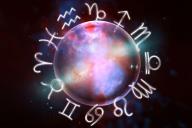During the last ice age, many bison lived in Europe.
However, by 1927, the European bison became extinct in the wild, and only about 60 were left in captivity.
Specialists have debated the reasons for their near extinction and how much humans were responsible.
A new discovery
A new experiment used fossils, ancient DNA, and modeling to understand the threats that caused the decline.
The research found that rapid environmental changes and hunting by humans were the main causes.

Efforts have been made to restore the European bison population, and their numbers are increasing.
But understanding why they almost went extinct is important for their long-term protection and recovery.
The lead author of the study said that their research also identifies areas where reintroduction efforts are most likely to succeed.
How it was discovered
The study looked at different information like weather, plants, people, and how bison behave to understand why their population declined.
Scientists checked old records, fossils, and ancient DNA to make sure their model was right.
By trying out different ideas on the computer, the researchers saw that the bison's homes started disappearing about 14,700 years ago because the climate was getting warmer.s made it hard for the bison to come back.
They hunted them and changed the land, which made things even worse.
Today, the European bison is still in danger because people are changing the land, hunting them, and the climate is changing.
We can use what we learned from the past to help keep them safe.
Why it's important
The European bison plays an important role in restoring grassland habitat, making it a priority species for conservation.
Efforts have been made to reestablish and rewild the species, but without a good understanding of their historical habitats, success has been mixed.
Previously, we talked about mental health problems in cats.









